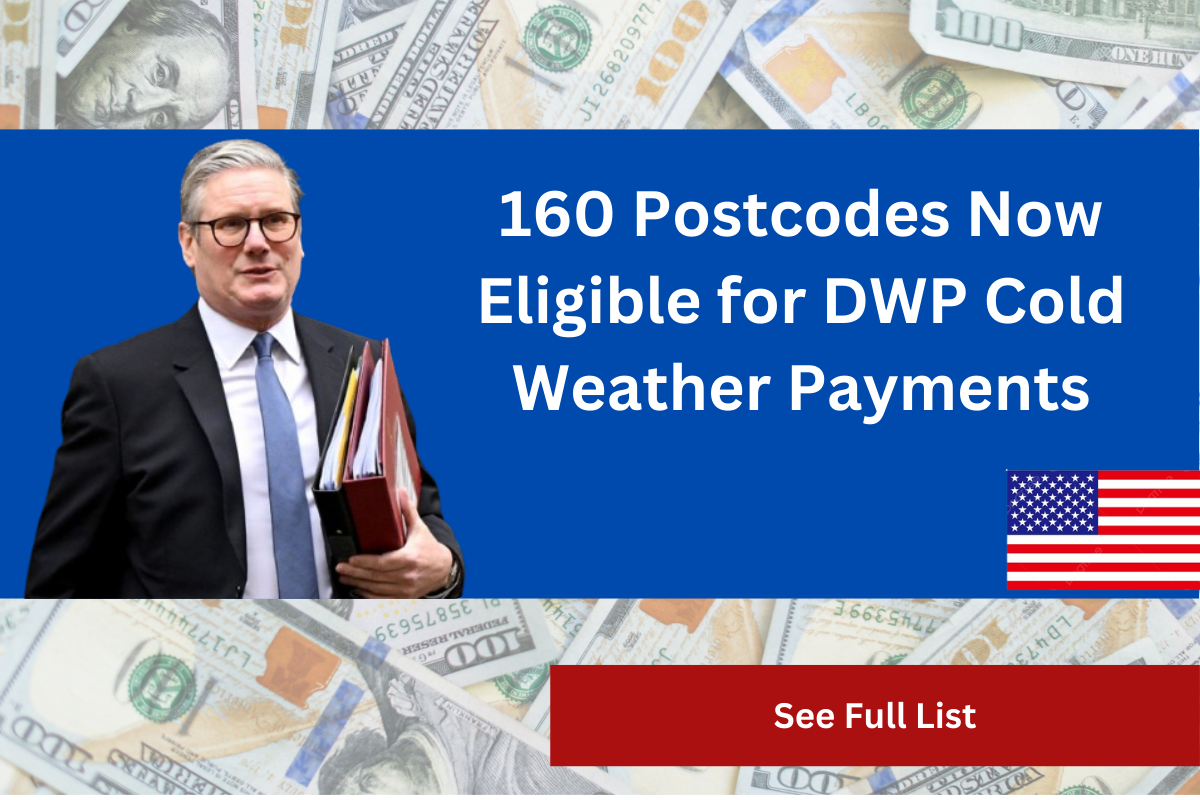As the chilly winds of winter begin to blow, the mention of DWP Cold Weather Payments brings a sense of relief to many households across the UK. You might be wondering, “What’s the big deal?” Well, hold on, because there’s some good news that warms the heart amidst the cold: 160 postcodes are now officially eligible for these vital payments! In the following sections, we will explore how this can benefit you or your loved ones, the eligibility criteria, and what you need to know to make the most of this opportunity.
Understanding Cold Weather Payments
Before diving into the details about which postcodes are eligible, let’s clarify what DWP Cold Weather Payments really are. Essentially, they’re a lifeline during those frosty months, designed to assist families and individuals on certain benefits when the temperature drops. Think of these payments as a warm blanket to cover the financial strain of heating your home during harsh winter days.
How do Cold Weather Payments Work?
The system is pretty straightforward: if your local temperature plunges below a specific threshold for seven consecutive days, you could receive a one-off payment of £25. Imagine being snug inside your home, knowing that help is on the way simply because the weather turned bleak! The best part? This isn’t a one-time deal. Eligible postcodes can qualify for multiple payments throughout the winter season, depending on the weather.
160 New Postcodes Added
Now for the fantastic news! The DWP has announced that an additional 160 postcodes are now eligible for these payments. This means more families will have access to the support they sorely need during the cold months. It’s like opening a door to a warmer, more financially stable winter!
Why It’s Important
You might be thinking, “Why should I care about the postcodes?” If you or someone you know lives in one of these newly eligible areas, this could make a significant difference. Heating bills can skyrocket in winter, and it’s a reality many of us face. These payments can alleviate that financial burden, making it easier to prioritize comfort and safety at home.
How to Check If You’re Eligible
So, how can you find out if you’re part of the lucky 160 postcodes? The process is quite simple. You can check your postcode against the official DWP list available online. All you need is your postcode, and voila! You’ll discover if you can benefit from this assistance.
What If You’re Not Eligible?
Feeling left out? Don’t fret! There are other forms of assistance available. Local councils often have support systems in place, and charities can be a great resource as well. Just remember, winter is tough for everyone; maybe there’s an option out there for you or a neighbor who needs a helping hand.
Conclusion
Good news travels fast, and with 160 new postcodes now eligible for DWP Cold Weather Payments, there’s more opportunity for support than ever before. As winter creeps in, knowing that help is available can provide comfort and peace of mind. Take the time to check eligibility and ensure you or your loved ones aren’t missing out. After all, warmth isn’t just about temperature; it’s also about feeling secure and supported.
FAQs
1. How often can I receive Cold Weather Payments?
You can receive Cold Weather Payments for each period when your area records qualifying temperatures. This typically means you could receive multiple payments in one winter season!
2. Who is eligible for Cold Weather Payments?
Eligibility includes those receiving certain benefits like Pension Credit, Income Support, or Universal Credit, as well as benefits for people with disabilities.
3. How much are the Cold Weather Payments?
Each payment is currently set at £25, designed to help during periods of severe cold.
4. Where can I find the list of eligible postcodes?
The list is available on the official DWP website, where you can input your postcode to verify eligibility. It’s easy and quick!
5. Can I apply for Cold Weather Payments?
You don’t need to apply separately; if you qualify, DWP will automatically assess your eligibility based on current benefits and payment systems.
